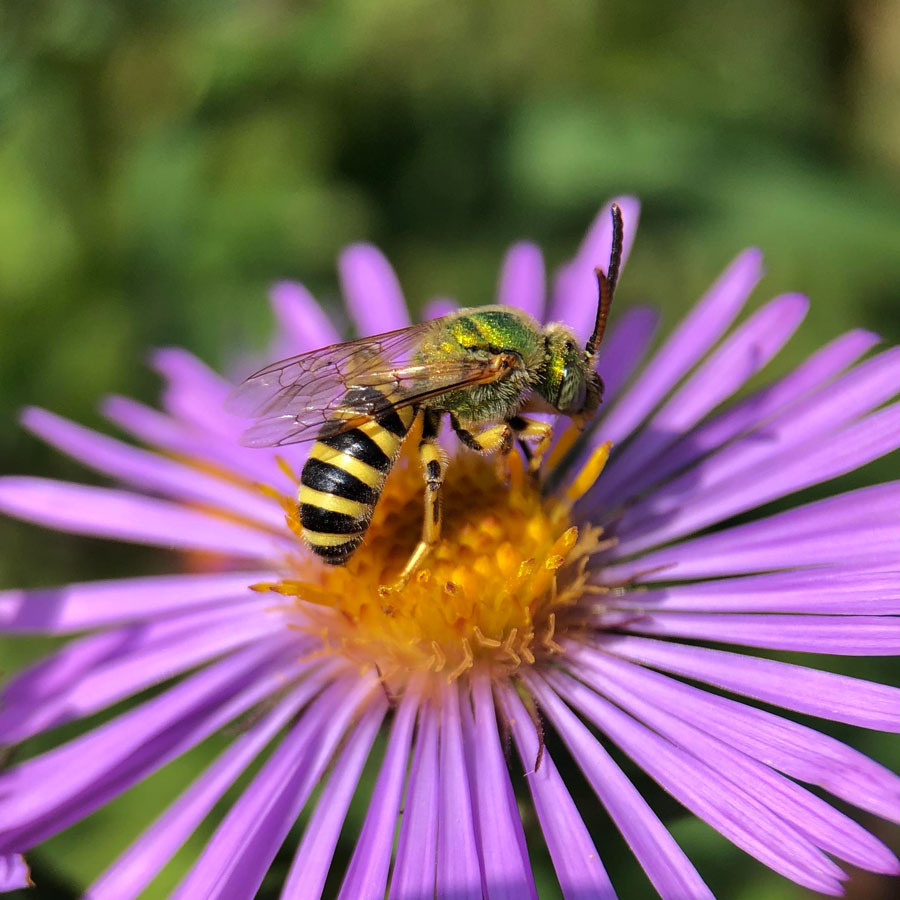CAMBRIDGE – Imagine a highway along the Toronto-Waterloo Region Corridor, except instead of paved roads for cars, trucks and motorcycles, the pathway is made of native gardens supporting bees, butterflies, birds and other pollinators.
The Rare Charitable Research Reserve is collecting data about local pollinator gardens and plotting them on an online a map.
The goal, spokesperson James Bow told the Advertiser, “is to sign up 1,000 gardens across southwestern Ontario to be pollinator gardens, to promote pollinator gardens and create a pollinator corridor.”
And Rare is well on its way to reaching its goal – with about 750 pollinator gardens registered so far, including about 30 in Wellington County.
Eventually, Bow said, they’d like to “go across Canada with this, so we can create a cross-Canada pollinator highway, to give pollinators more space where they can thrive.”
Pollinator gardens have native plants that support pollinators such as monarch butterflies, yellow-banded bumblebees and ruby-throated humming birds by providing them food and shelter.
Rare collects data on each garden, including the native plants growing, the size and age of the garden, and any additional features to support pollinators such as bee boxes, water sources and feeders.
The gardens can be as large as a wildflower meadow or as small as a few pots on a patio – as long as they incorporate native pollinator plants such as asters, bee balm, and black-eyed Susans.
Bow said one of the goals of Rare’s 1,000 Gardens Project is to “move people away from the idea that the well manicured lawn is a sign of a good garden.”
He describes lawns as “basically a dessert for pollinators – nothing for bees or butterflies or other insects or birds to feed on.
“That really has a cascade effect on the ecosystem,” he said. “With out giving space for these pollinators to pollinate, there are fewer pollinators around and the plants that depend on them don’t do as well.”
Plants dependent on pollinators include food crops such as tomatoes, berries, apples and pumpkins, as well as alfalfa to feed cattle.
Gardens with native plants also have better water retention, Bow said, as native plants “act as better sponges,” absorbing storm water.
Pollinator gardens are also easier to maintain than lawns, he said, as there’s no need to use lawn mowers, weed wackers or leaf blowers, which are often powered by gasoline.
“A pollinator garden requires a lot less energy in order to work than a well manicured lawn,” Bow said. “And that contributes directly to things like climate change.”
For more information about Rare’s 1,000 gardens project, to register a garden or order a pollinator garden sign, visit raresites.org/.rares-1000-gardens.
The Canadian Wildlife Federation collects similar data to plot on its own “Garden Habitat Certification” map at cwf-fcf.org.
To certify a garden as a “Certified Wildlife-friendly Habitat” through the Canadian Wildlife Federation, gardeners complete a short application comparable to the Rare pollinator garden map.
The application form has questions about food for wildlife (including nectar, pollen, fruit, seeds and foliage), water sources, shelter, “green gardening” methods and sustainable practices such as removing invasive plants and planting natives, as well as examples of wildlife seen in the garden.
The application process is immediate and if criteria is met, the garden is added to the map and the gardener receives a digital certificate identifying their garden as wildlife friendly and the option to purchase a sign.




